By Kevin Byrne, AccuWeather.com Staff Writer
September 19,2015; 1:11AM,EDT
A powerful earthquake occurred just off the coast of central Chile during Wednesday evening local time and has produced a tsunami over the Pacific basin.
The quake is the third most powerful earthquake in five years to strike the South America nation.
According to the United States Geological Survey (USGS), the quake registered magnitude 8.3, at 7:54 p.m. local time (4 p.m. PDT) on Wednesday. The quake lasted for approximately three minutes.
At least 13 people were killed as a result of the quake, according to the Chilean government. One million Chileans were evacuated due to tsunami warnings. The tsunami warnings in the immediate area have been canceled.

Jump to the tsunami risk for Hawaii and Southern California.
Rescue and Recovery Weather Ideal, but Aftershock Risk Continues
Officials are citing preparedness and strict building codes in many areas for the low number of fatalities, despite the massive quake.
Dry conditions across much of Chile, including near where the earthquake occurred, will not hinder cleanup and recovery efforts, AccuWeather Meteorologist Jordan Root said.
"Dry weather will continue for the next few days," Root said, adding that seasonable temperatures are expected.
Aftershocks remain the primary concern.
Dozens of aftershocks have occurred in the area since the initial temblor, with the largest being a magnitude 7.0, according to the USGS. The shocks can lead to additional damage, cause more buildings to collapse and endanger those partaking in rescue and recovery efforts.
Landslides and damage to buildings were reported in Coquimbo and Canela, according to Chilean Deputy Interior Minister Mahmud Aleuy Peña y Lillo and local government officials. A state of emergency has been declared in Coquimbo, according to the BBC.
Así se ve Concón esta mañana tras el tsunami pic.twitter.com/0kHK4o7nkf #TerremotoChile
As of Friday morning, more than 47,000 people across Chile remained without power, the National Emergency Office reported. The electric company, Chilectra, reported having teams out to fix the issues.
La oscuridad es cómplice de los daños. Pero, nos levantaremos. Una y mil veces. Sector central de Canela Baja.
Alcalde Bernardo Leyton constató en terreno complejidad por derrumbes en caminos de acceso a la comuna.
Emergency measures were taken very quickly given the magnitude of the earthquake, Chilean President Michelle Bachelet said.
Canela Mayor Bernardo Leyton told CNN Chile that 80 percent of the adobe homes in his area have been destroyed or damaged. Tents and other emergency shelter were urgently needed.
RELATED:
AccuWeather National Satellite for Chile
AccuWeather Extended Forecast for Santiago
South America Spring Outlook for 2015
The earthquake is the largest to strike worldwide since April 1, 2014, when a magnitude-8.2 megathrust earthquake struck off the Chilean coast near Iquique. A quake in February 2010 registered magnitude 8.8. The most powerful quake ever recorded worldwide occurred near Lumaco, Chile, during May 1960 and registered a magnitude 9.5. All three of the aforementioned quakes generated tsunamis.
Tsunami waves with a height of 4.75 m (15.6 feet) have been measured near the port city of Coquimbo, Chile, during Wednesday evening.
 Air patrollers surveyed flooded areas in Coquimbo, Chile. (Twitter Photo/@Carabdechile)
Air patrollers surveyed flooded areas in Coquimbo, Chile. (Twitter Photo/@Carabdechile) On Baquedano Street in Coquimbo, Chile, tsunami waves resulted in widespread damage. (Twitter Photo/@Langel090)
On Baquedano Street in Coquimbo, Chile, tsunami waves resulted in widespread damage. (Twitter Photo/@Langel090)

Carlos Ruiz Baez added a new photo — with Seamen Chile and Hugo Rojas Pizarro.
34 Likes · 2 Comments · 14 Shares
Flooding from a tsunami wave covers a roadway in Coquimbo, Chile. A magnitude-8.3 earthquake struck the region on Wednesday, Sept. 16, 2015. (Photo/Bio-Bio Informa)
A wave measuring 1.78 m (5.8 feet) was reported in Valparaiso during Wednesday evening.
At 8 a.m. HST Thursday, tsunami advisories were no longer in effect in Hawaii. The tsunami advisory in Southern California was canceled later in the afternoon, the National Weather Service office in Los Angeles said. No damage or impacts along the California coast were reported.
Very minor waves began to hit Southern California during Thursday morning. Gauges along the coast of Southern California have recorded fluctuations in the sea level with the biggest change in Ventura Harbor of 13 inches. Tsunami waves up to 1 m (3 feet) reached Hawaii.
Tsunami waves up to 1 m (3 feet) reached Japan during Friday morning local time, The Associated Press reported.
New Zealand also issued a tsunami warning, the country's Ministry of Civil Defense and Emergency Management reported. A tsunami wave of 0.8 feet (0.25 m) occurred at Christchurch.
 Police
patrol a debris-strewn street in Valparaiso, Chile, after a tsunami,
caused by a magnitude-8.3 earthquake hit the area, Wednesday, Sept. 16,
2015. (Photo/Pablo Ovalle Isasmendi/AGENCIA UNO via AP)
Police
patrol a debris-strewn street in Valparaiso, Chile, after a tsunami,
caused by a magnitude-8.3 earthquake hit the area, Wednesday, Sept. 16,
2015. (Photo/Pablo Ovalle Isasmendi/AGENCIA UNO via AP)AccuWeather Staff Writer Mark Leberfinger, and Meteorologists Courtney Spamer and Alex Sosnowski contributed content to this story.

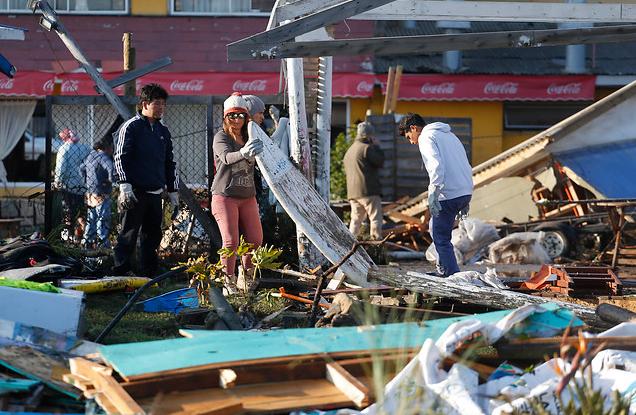
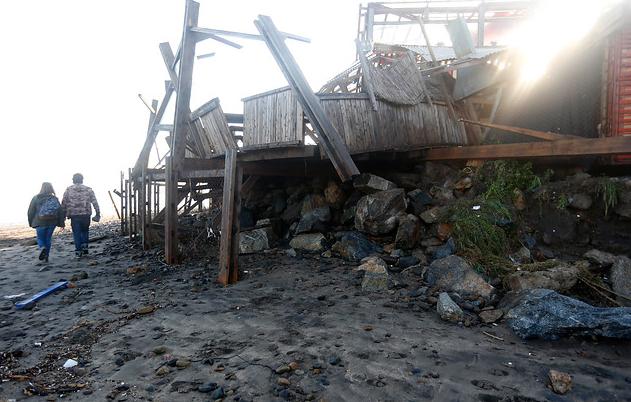

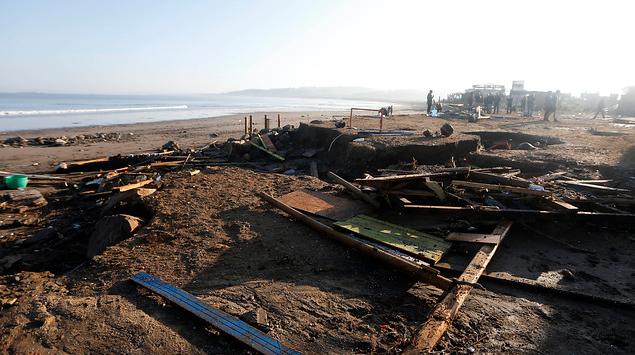

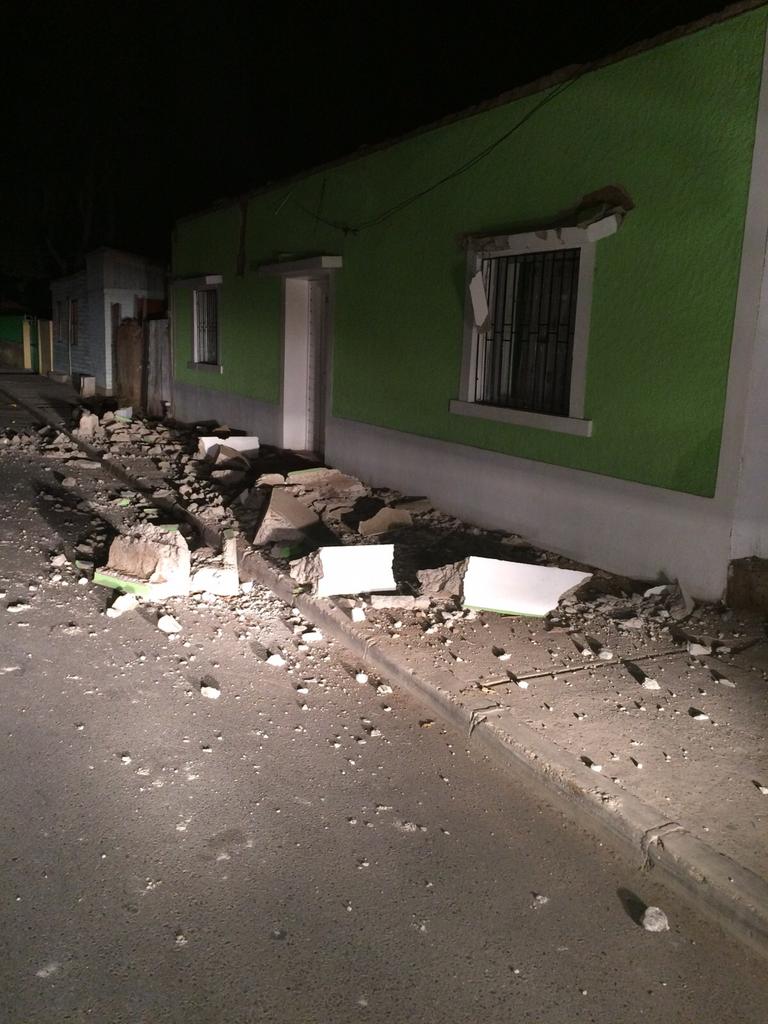

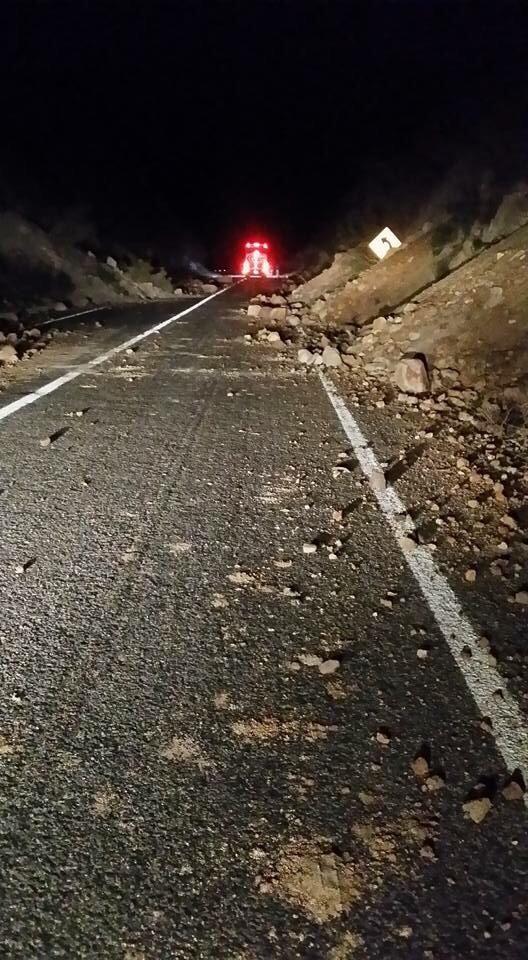

No comments:
Post a Comment